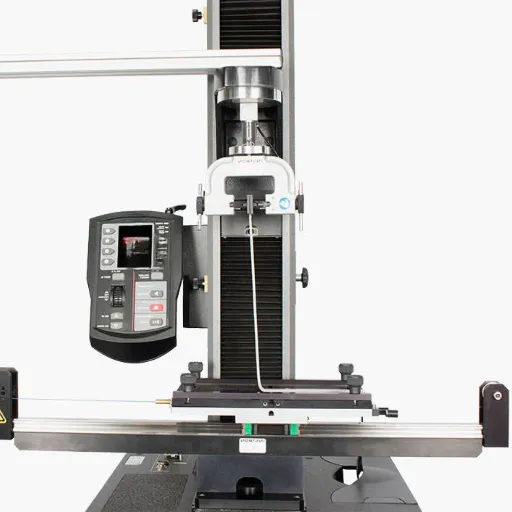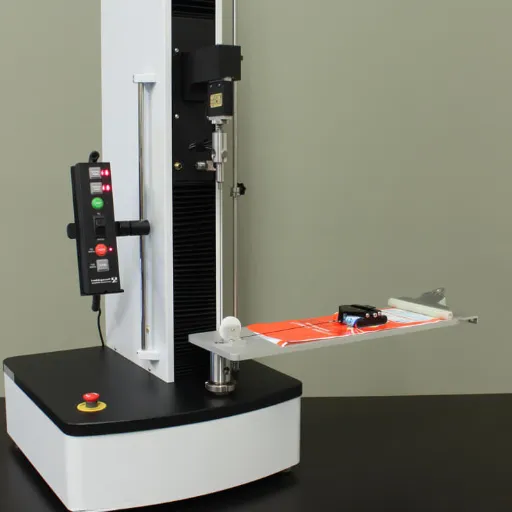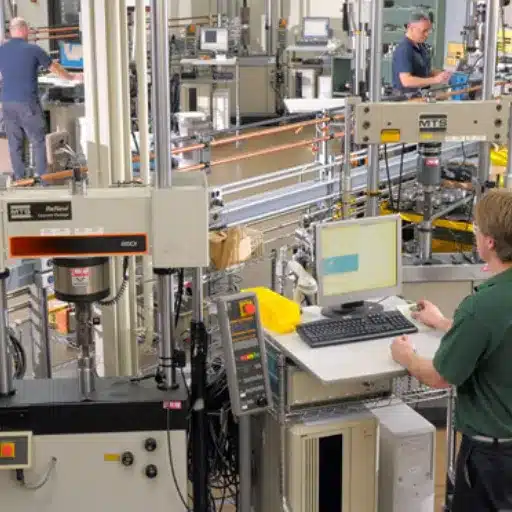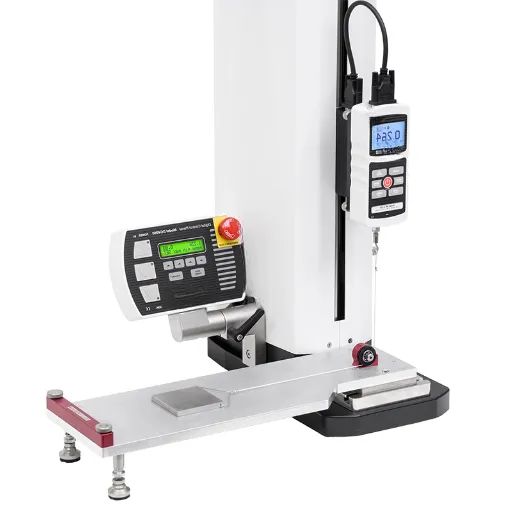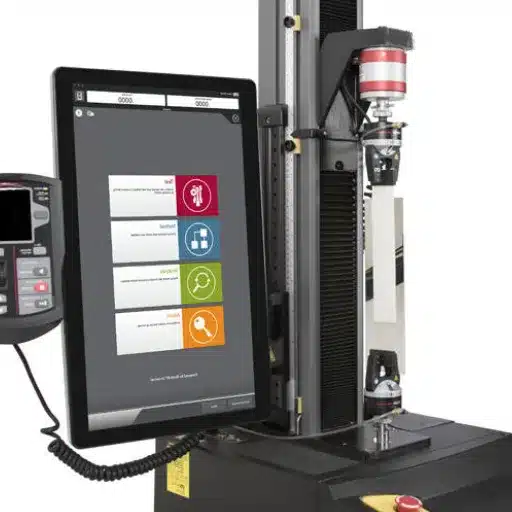Historically, friction has served many uses, some of which are now obsolete, while others still prevail. Since friction facilitates opposing forces to resist relative movement between two surfaces, it is mainly an opposing force in nature. In this way, friction stops a car from skidding on a highway or makes a precise machine work. This article outlines the essence of the friction test, detailing the processes behind frictional forces and how they are subjected to measurements. We will then discuss real-life cases where such tests are employed and why they are crucial in engineering and manufacturing. After reading this article, not only will your respect for the coefficient of friction be further deepened but so will appreciation of many of its engineering realizations.
Introduction to Friction Tests
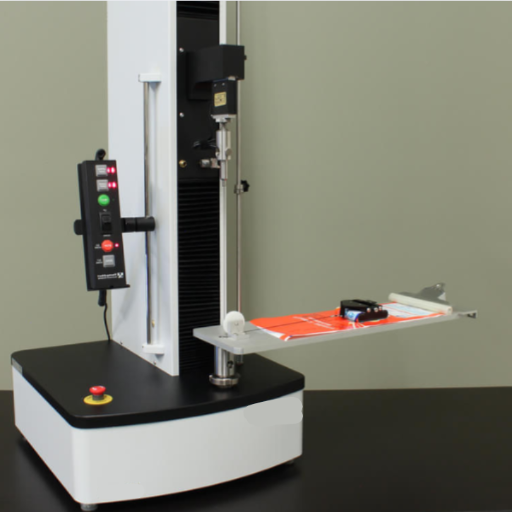
A friction test is one type of test to determine the resistance to movement between two surfaces in contact. The force that is exerted on the surfaces to make them slide against each other is measured in terms of the coefficient of friction. This set of data is necessary in the assessment of the performance of materials, for safety, and for maximum efficiency in engineering, automotive, manufacturing, and aerospace applications. The standardized procedures such as ASTM and ISO tests carry out friction testing to ensure that measurements are consistent, reliable, and are a considerable factor in selecting materials and quality control.
What is a Friction Test?
A friction test is a standard operation for measuring the resistance to relative motion between two surfaces in physical contact, under specified conditions. The controlled application of force and measurement of frictional resistance generated are used in determining the coefficient of friction (COF), a dimensionless number representing the ratio of the force of friction (F) to the force perpendicular to it pressing the surfaces together, i.e., the normal force (N). Friction tests may be performed in dry, lubricated, nearly uncontrollable humidities, or nearly any operating ambient temperatures, depending on the application.
In the modern times and according to the latest data, these tests have become more and more important in sectors like automotive, aerospace, and manufacturing, where performance of frictional characteristics directly influences the performance, safety, and longevity of the materials. As an example, in automotive brake systems, friction tests are used to aid engineers to maximize braking efficiency of the system, whilst minimizing wear and noise. Most recent equipment used in friction testing integrates digital sensors and data collection automation, which allows consistent and repeatable measurements. Advancements in computational analysis coupled to friction testing permit in-depth understanding of material behavior, further fueling the innovation of product design and development.
Importance of the Coefficient of Friction
The value of the coefficient of friction is an indicator of the resistance against motion of two surfaces in contact. It is highly considered in establishing performance, longevity, and safety of any mechanical system. Variations in coefficient of friction levels, depending on the applications, may provide the best guarantee of control and efficiency in automotive brakes or industrial machinery. Thus, a high coefficient provides good gripping power as against the interaction between tires and road while a lower coefficient provides less friction as the Indonesian leather blender is applied to keep from losing energy. Engineers designing materials and systems look at frictional forces and use everything they need effectively, so that they can provide services that are practically functional and reliable in specific operational contexts.
Overview of ASTM D1894 Standards
ASTM D1894 is a well-known standard that describes how to measure the coefficient of friction (COF) of plastic film and sheeting. It describes the testing of measuring static and kinetic COF considered important in judging the performance and handling properties of materials used in packaging and manufacturing. The test requires sliding one material surface against the other under given conditions, using specified equipment such as a sled and a fixed base. These tests allow ASTM D1894 to proceed in making consistent and accurate surface interaction assessments that assist with material research, quality control, and benchmarking of performance within industries such as plastics, packaging, and consumer products. By adhering to this standard, manufacturers can rely on reliable, repeatable results that meet the very stringent quality and functional requirements.
Methods of Coefficient of Friction Testing
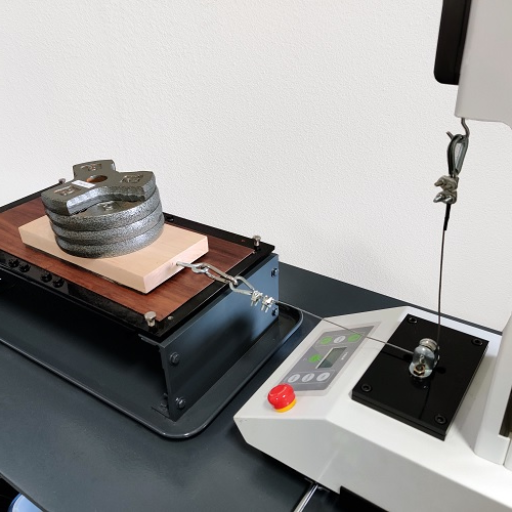
Evaluating the frictional properties of surfaces involves testing for different coefficients of friction namely, static and dynamic or kinetic friction forces. The static coefficient of friction is defined as the frictional force acted between two surfaces in contact but at rest. The kinetic coefficient of friction, on the other hand, measures the force applied in motion for the same surfaces already in contact and in relative motion. An example can be the ASTM D1894 set up of the friction test where, upon a stable foundation, simple samples are immobilized while the sled made of another substance is made to slide over them at specified weights. The slid force is thus recorded and the frictional coefficient of that line is calculated as a fraction to the surface force used. The more advanced control systems may include equipment with sensors and programs facilitating better reliability and accuracy in data.
Friction Tester Overview
One of the fundamental instruments widely used is the friction testing machine, useful to determine the coefficient of friction (COF) between surfaces of two joining materials. It tests static as well as dynamic friction in such a way that a limit is set to the friction and testing results are significant for the analysis and optimization of materials. Also, modern friction testers come equipped with automated solutions and sophisticated sensors that can help in collecting data in real time and interpret it through the developed software. The demand for these friction testers is usually observed in pivotal industries such as packaging, automotive, textiles for trust and surface enhancement of the products. It again ensures that they fully comply with the optimum quality and safety measures required for the functioning of the materials, through correct COF measurements.
Testing Methods: Inclined Plane vs. Universal Testing Machine
Inclined plane testing and universal testing machines are the two primary methods for evaluating the coefficient of friction (COF), each differing in design, operation, and precision.
|
Parameter |
Inclined Plane |
Universal Testing Machine |
|---|---|---|
|
Principle |
Angle adjustment |
Force measurement |
|
Operation |
Manual/assistive |
Automatic |
|
Precision |
Moderate |
High |
|
Versatility |
Limited |
Wide range |
|
Speed |
Fast |
Moderate |
|
Cost |
Low-Medium |
High |
|
Applications |
Basic COF testing |
Advanced material testing |
Applications of Coefficient of Friction
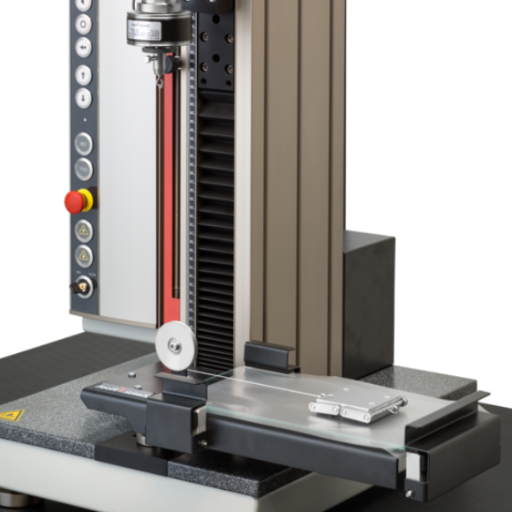
The coefficient of friction (COF) is one of the most essential variables in material science and material engineering that is indispensable within many fields for the promotion of safety, efficiency and durability within the various working environments. There follows a discussion of some major aspects of its application:
1.Materials Testing/Quality Assurance
This coefficient is vital in assessing surfaces’ conditions, frictions reduction and adaptability materials; these are mainly used in the car, aerospace, packaging and textile industries among others.
2.Efficient Design of Products
Engineers apply COF factors to produce workable designs or products by focusing on enhancing the grip of a component, or either friction resistance or lubrication, in items such as tyres, conveyor systems, or machine parts.
3.Advances in industrial Automation
Exact friction factor data helps in analyzing the materials within appendages in a discourse that helps avoid any slips of grippers or robotic gripper nonetheless premature failures of those bearing materials.
4.Interaction of Machines and People
In applying such systems, COF is quite helpful as it is used in the design of equipment, shoes and floor surfaces that do not predispose the users; especially younger ones to slipping and falling while they are using these products.
5.Transportation and Road Safety Standards
COF measurement is a very important element in the provision of traction most notably in the case of pavements, which more so in some cases extend to railways and runways as well as in the aviation industry’s runways by virtue of stringent safety standards.
These case studies commend COF as an enabler in development of science and technology as well as providing conducive safe working conditions.
Role in Materials Research
In the field of materials science, the coefficient of friction (COF) plays a fundamental role as it tells about the mechanisms of surface interactions. It allows the creation of new substances involving specific frictional designs for the purpose of such substances as polymers, coatings, and lubricants. However, from the angle of COF, there is scope towards improvement of properties in a material regarding wear, power and the life span of that material. Top-notch measurement techniques, a new generation of tribometers, as well as the use of forensic atomic force microscopy, among other things, also enables the COF to be measured at a much greater accuracy which in turn allows specialists to work on surfaces that are of particular performance requirements in a number of industries.
Importance in Product Development
The coefficient of friction (COF) is thus significant in employment structures as well as the smooth running and servicing of any systems and structures at any location of their application. The purpose is to help the designers and engineers achieve the best possible accordance of surfaces, a phenomenon that is apparent in a number of applications including the braking system of a car, the medical industry, and machines. Explainably, while properly focusing on lowering the coefficient of friction, induced stresses and unnecessary wear of components are minimized, more important there is rising efficiency of the product while bearing costs. Such superfluous friction questions encompass operations of enhancing product safety by increasing a product energy efficiency as well as promoting surface functionality in response to the demands of the customers and in the particular industry. This level of accuracy contributes to the innovation and competitiveness advancement of chief companies in each field.
Utilization in Quality Control Processes
In production and inspection work, the coefficient of friction (COF) provides a vital function which promotes the consistency in the product and its efficiency. By doing so, I will be in a position to detect changes in the material properties or processes that would affect the product’s ability to function correctly or safely. The measurements are used to study the roughness of the surface, the coating, and films which are required to be up to certain specifications. In this way, I am able to improve my ability to serve the interests of my organization and its clients, detect defects in products early on, avoid wastage of resources, and maintain operational standards. I also conduct frictional analysis with precision, controlling all the variables, to consist product performance durability, efficiency, and reliability, which are taken for granted both by the camps and the clients.
Standards for Coefficient of Friction Testing
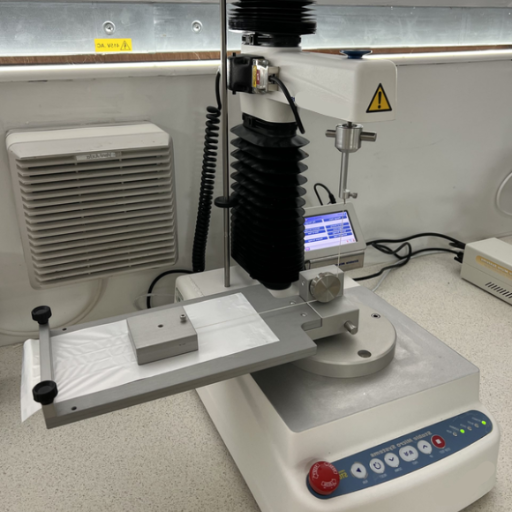
Different regulatory as well as industrial bodies have standards for conducting the tests on Coefficient of Friction (COF) so as to enhance homogeneity and correct measurement procedures. The ASTM D1894 standard which relates to plastic, films and sheeting for COF measurements, the ASTM C1028 for ceramic surfaces and ISO 8295 includes plastics and rubbers to mention but a few. Such standards have testing requirements, specifications and test means and equipment like the mass of sleds, rate of testing and environmental conditions among others so high reproducibility and precision are achievable. Compliance with these standards is highly recommended as it helps with adherence to the set standards, optimizing the functions or performance of the products and safeguarding the consumers and the product in multiple applications.
ISO and ASTM Standards Overview
International standards for ISO and ASTM seek to provide quality, safety, and uniformity within the many industries. In the case of ISO, such as ISO 8295, they generally provide details on the appropriate tests for the attributes of a designed material, covering aspects including friction, mechanical and wear properties, with an aim of encompassing all regions of the world. However, ASTM standard, in particular D1894 and C1028 define proper procedures on how to test several materials and the procedures have been developed with uniformity and accuracy in mind. In most cases, organizations strive to comply with the necessary standards for their products so that improvements will be made in functionality as well as other requirements exclusive to that industry.
Understanding Standards Compliance
The assurance of the quality standards meets the certainty of the safety of the materials used in certain applications; which is why performance of materials is very important and also guaranteed by the compliance to standards. I personally make sure that we meet certain standards like ASTM to ensure that the materials or perhaps the processes that I use meet certain standards of testing. This helps not only in ensuring there is no deviation from the laws in relation to that jurisdiction but also enables the enhancement of product reliability and conformity in the context of that product in that industry. There are also very precise techniques that allow for consistency and trust so that the results that one obtains are always the same and for everyone who obtains them.
Implications of Non-Compliance
When there is un-regulated ASTM standards, there is a lot of consequence. From my experience, it compromises the performance of the products, reduces the dependability and is able to create or manufacture the products which are not safe to be used. In addition, meeting the standards also addresses issues such as avoidance of legal consequences arising from penalties, recall products due to quality control failures and damage to one’s professional standing in the society. These guidelines for example assist in ensuring quality, guaranteeing repeated performance and enhancing customers’ confidence in any particular industry.
Advancements in Friction Testing Technologies
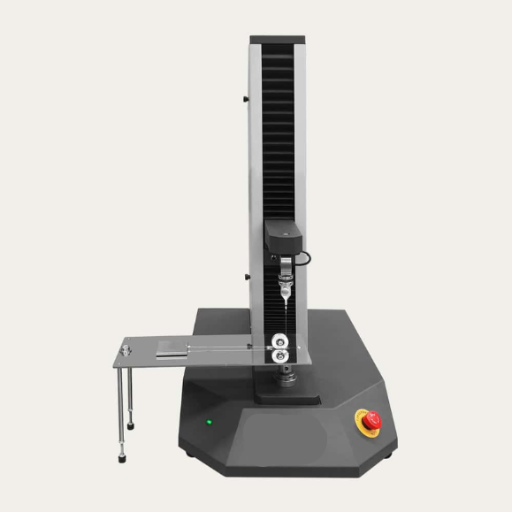
Recent technology advances related to friction testing equipment did not leave out more precise, more robust, and cost-efficient instruments formulation – such improvements got several industries covered. The primary development is the realization of comprehensive automation, inclusive of machine learning applications that enhance the reliability and precision during testing as well as minimize potential occurrences of human errors. Furthermore, developments in such sensors, as well as monitoring systems, lead to high-resolution dynamics of laminar discrete gouging. Instruments and equipment which support carrying out tests on site have especially managed to come up with portable ones that do not require one to take a lot of space in the laboratory setting. Such improvements as the ones above enable effective addressing of issues to do with quality and performance: maintenance of very high standards in the market, enhancement of product safety and reduction of costs in development.
Innovative Coefficient of Friction Testers
Modern friction devices use the latest technology employing sensors that must be accurate and data analysis involving cyber testing to generate reliable coefficient of friction measurements. It is typical for such devices to include multiple functional platforms, and these platforms can test many forms of materials such as polymers and even coatings in different temperature ranges and humidity which is often the case. Furthermore, several solutions provide also digital control panels equipped with wireless cloud support allowing quick analysis of the data and even direct uploading of this data onto a quality information system. These advances improve productivity and enable companies to fulfill global testing standards with ease as such testers find heavy use while performing research, engineering and production and quality control activities.
Emerging Trends in Friction Test Methods
Already, Continuous improvement of friction tests methodologies for enhanced performance is driven by the material science and data analytic advancements. The testing methods that are developed address conditions that are extremely burdensome for normal usage in relationship with new Generation tribological materials. Different challenges on demand of friction test to pap techniques have resulted from automation requiring a number of advances such as addition of robots in order to carry out friction tests where frequency and/or accuracy is high reducing human intervention in test performance. With that approach comes the employment of machine learning-enabled data analysis and this has changed the trend on result analysis and interpretation significantly. These devices help in capturing the change in behavior of friction that appears to be highly complex and turning this information into a proactive measure to enhance the performance of the material before proceeding with mass production. The aforementioned approaches have made the testing process more efficient and quicker while performing the same task, which is welcomed by post-industrial societies.
Future Directions for Friction Testing
As for what will come after the recent developments, friction testing of the future will, in my opinion, entail advancements in the use of artificial intelligence, development of nanotechnology as well as the use of real-time analysis. As the frictional condition of materials within different periods focuses on improving materials or ensuring the prevention of maintenance practices. The high cost of wear and tear prevention will also be reduced through use of Nano-technology where the surfaces or coatings assemblies will be enhanced to defer the wear out. The information collected and the interaction made between these IOT devices makes it possible to make control changes and improvements based on the information coming from the test. The focus of these enablers is to address the demanding processes of such testing within industries rather than increasing its complexity.
Reference Sources
-
Coefficient of Friction Testing: Procedure, Application, … – A detailed guide on the procedure and applications of coefficient of friction testing.
-
Coefficient of Friction Testing: Comprehensive Guide – Biopdi – Explains the CoF testing process, including the methodology and its applications.
-
Understanding Coefficient of Friction for Different Materials – An in-depth tutorial on the coefficient of friction for various materials.
-
Coefficient of Friction – Discusses the concept of CoF and its relevance in material properties.
-
Coefficient of friction of various materials not listed in … – A forum discussion on the coefficient of friction for different materials, including those not commonly listed in standard references.
Frequently Asked Questions (FAQ)
Q: Can you explain the term friction test?
A: A friction test is the action of measuring how much effort is needed before one surface slides on another surface. Determining the friction properties of the materials is important in different fields of usage, like packaging, roads, etc., due to safety reasons and those of operability.
Q: How can one find the coefficient of friction?
A: One finds the coefficient of friction by calculating the ratio of force needed to slide a body to the normal force working on the body. The value provides information about the level of friction in the surface pair whether its static or sliding.
Q: What are some uses of the coefficient of friction tests?
A: There are many uses of coefficient of friction tests, for example, in the packaging industry where it is used to test how efficient the packaging materials would be once frictions are encountered. Also, in the construction and the automobile industry, tests are done on roads and tires to check their condition.
Q: How is static different from dynamic friction?
A: Static friction helps explain why objects at rest cannot be set into motion unless a certain force is applied, while dynamic friction is present in cases where the object in question involves locomotion. However, static friction has a tendency to be more than dynamic friction, implying that it is harder to push than to pull.
Q: Which apparatus are utilized in the coefficient of friction tests?
A: The coefficient of friction testers comprise of apparatus like friction testers and Mobility Research Corporation machinery. For these machines or devices, both static and dynamic friction can be tested by giving a certain amount of stress on the test specimen and taking measurements from the results.
Q: What does ASTM regulate in relation to coefficient of friction testing?
A: There exist ASTM (similar to ASTM D1894 explaining plastics) used for illustrating testing procedures of the coefficient of friction. In this regard, these standards step up in ensuring uniformity and accuracy of the practices so as to facilitate accurate testing of the materials by the manufacturers or the design field engineers.
Q: How can the addition of the weight to the sled affect the results of the friction test?
A: Increasing the weight of the sled in the friction test will cause an increase of the normal reaction force of the sled and this will affect the coefficient of factors of friction found. This will be achieved by using a heavier sled which modifies the same friction used paper to a different value caused by the weight of the sled.
Q: Why do we use a friction tester?
A: A friction tester simulates realistic conditions for the analysis of materials based on their frictional properties. This instrument facilitates the determination of the friction of surfaces by making it possible to measure how much force is required to pull a sled over a surface and for industrial purposes, this is important.
Q: What is often considered in a coefficient of friction test?
A: Surface condition of the sample materials, speed at which the testing is being performed and environmental conditions like temperature and moisture level are common variables. All of these parameters can affect how the friction of the material is measured in the lab.

